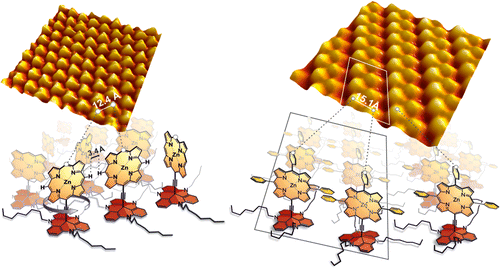Title: Ordered Monolayers of Free-Standing Porphyrins on Gold
Authors: Franziska L. Otte †, Sonja Lemke ‡, Christian Schütt †, Nicolai R. Krekiehn ‡, Ulrich Jung ‡, Olaf M. Magnussen *‡, and Rainer Herges *†
Journal: Journal of the American Chemical Society
Affiliation: †Otto-Diels-Institute for Organic Chemistry and ‡Institute for Experimental and Applied Physics, Christian-Albrechts-University of Kiel, 24098 Kiel, Germany
Words to Know
- chromophore – the part of a molecule that is most responsible for the color of the molecule, so basically the part of the molecule that absorbs light.
- porphyrin – a special set of large cyclic molecules that have lots of conjugated bonds and some nitrogen atoms in specific locations. Because of their high conjugation they usually absorb a ton of light. The porphyrin from which all porphyrins can be drawn looks like this:
Background
Experimental Procedure
The researchers synthesized their molecules by first synthesizing porphyrin rings and then attaching them to another large cyclic molecule whose structure forces it to bend into a cone-like shape. They created two different porphyrin rings, one with hydrogens and the other with phenyl groups, see the authors’ figure below.

The authors then created a single layer of these upright porphryins by dunking gold crystals in solutions of various concentrations.
Results
The authors used scanning tunneling microscopy (STM), absorption spectroscopy, and computational methods to investigate the structure of the porphryin layers. The ring with hydrogens had hexagonal structures with approximately 12.4 angstroms between different molecules as determined by STM. In this structure, the rings are able to rotate freely. The rings with phenyl rings have a more complicated overall structure with double rows of molecules forming. Using a combination of the STM data, data from absorption spectroscropy, and computation methods the authors were able to show synthesis of their novel surface-attached porphyrins!
Conclusion
The authors were able to create a layer of well ordered porphyrin rings attached to a gold surface. This method of creating ordered porphyrin structures could have exciting applications in solar cells.




